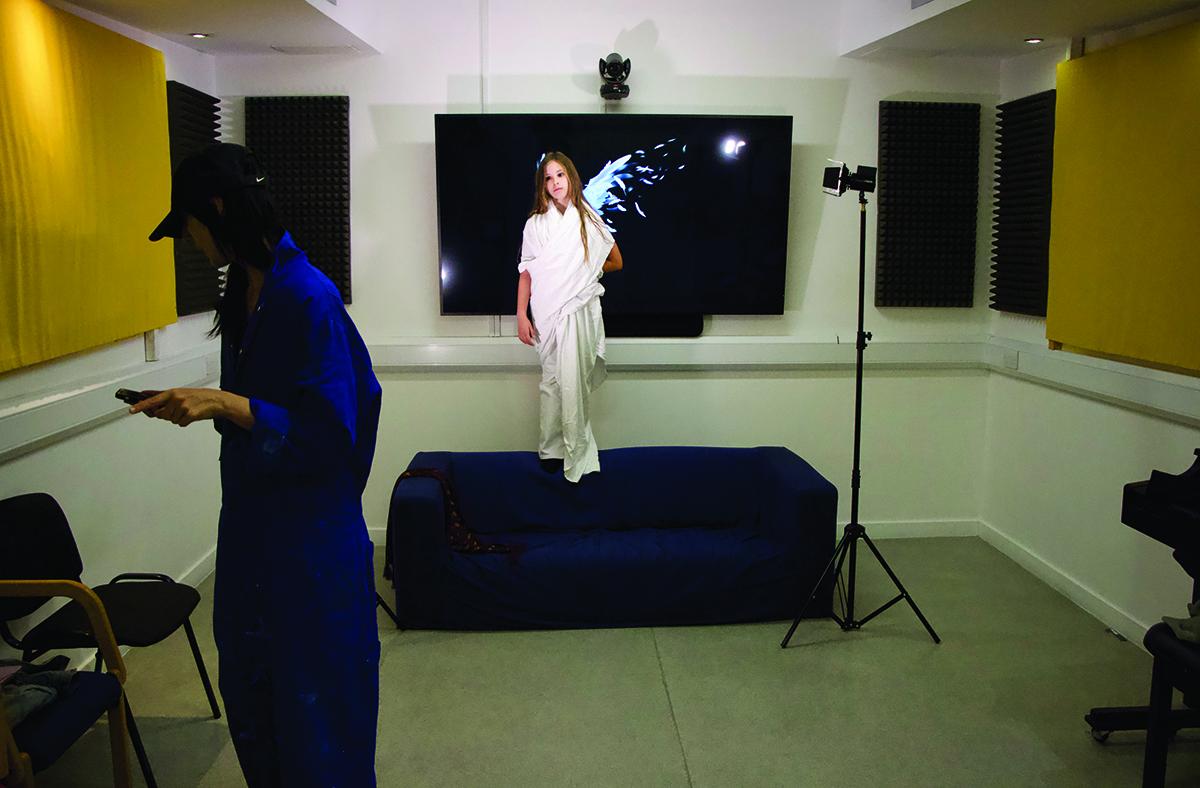
by Jori Celona, Associate Professor, Creative Writing Program
My third novel, The Year of X, begins with Edie X., a mid-career artist, leaving her husband to attend a yearlong artist residency in upstate New York, bringing her young daughter, Lou, along for the ride. Her proposed project is a reimagining of Rembrandt’s The Anatomy Lesson of Dr. Nicolaes Tulp, in which she plans to document her own top surgery in a series of photographs. But shortly after arriving at the residency, she begins to have bizarre seizures, which hijack her life and art, and alter her sense of personhood in the world.
In 2024, I received a CSWS Faculty Research Award to create Edie X.’s art with artist Anthony Schrag of Queen Margaret University in Edinburgh. I had not previously felt I needed to embody my protagonists to write them well. But in the case of Edie X., I felt I needed to create her artwork to understand her. Being an artist wasn’t her “job”—it wasn’t even her “calling.” It was more than that—in the way I feel my fiction is central to who I am.
Edie X. is inspired by several contemporary artists, but her work is most informed by Canadian artist Jeff Wall, whose 1979 photograph Picture for Women is a reimagining of Édouard Manet’s Un bar aux Folies-Bergère from 1882. Whereas Manet’s painting objectifies its subject (a prostitute), Wall’s update speaks to the representation of women in art throughout history. I have always been drawn to the oil paintings of the Renaissance and Neoclassical periods for their repurposing of the past, and it made sense to give this preoccupation to Edie X.
Over the course of ten days, Schrag and I created several works from Edie X.’s career at the Out of the Blue Drill Hall in Edinburgh. Among them:
- a mid-career series on motherhood that she begins at the residency, including a reimagining of Élisabeth Louise Vigée Le Brun’s self-portrait with her daughter (1789) and of Caravaggio’s Saint Matthew and the Angel (1602), both controversial in their day;
- an early-career recreation of stills from Andrei Tarkovsky’s Stalker (1979);
- Edie X.’s biggest career controversy: a photograph of herself as a trans man that she sells to a perfume company for a magazine ad.
In our photographs inspired by—and in response to—oil paintings by Le Brun and Caravaggio, we tried to replicate what might cause similar discomfort in 2024. Le Brun’s daughter is smiling with her mouth open—outrageous in 1789, when sitting for a painting was a serious affair. In our replication, Edie X. looks as though she is about to passionately kiss her child. It’s a discomfiting image—the idea being that the intense bond between a mother and child is too much to behold—and calls to mind regressive reactions to public breastfeeding.
“The concepts of shame, identity, representation, offense, and atonement are explored through these recreations,” says Schrag. “Layered throughout these works we examined the erasures and presences that are caused by Edie X.’s diagnosis of epilepsy halfway through the novel.”
After much discussion, Schrag and I felt that Edie X. would depart from photography for her final work of art in the novel. I found myself writing a performance piece in which Edie X. has several seizures over the course of seven days in a gallery, partly to “atone” for the furore caused by the lucrative photographs of herself as a trans man and partly to make her invisible disability a very visible thing, bordering on spectacle.
As I continue to work on this novel, I do so now with a portfolio of Edie X.’s work. Most importantly, I feel I know Edie X. in all her prismatic wonder: an artist pushing forward her career; a nonbinary mother preparing for top surgery; and a person living, working, and parenting with a disability—all is to say, I know her well enough now to write her.
—Marjorie Celona received a 2024 CSWS Faculty Research Grant for this project.

